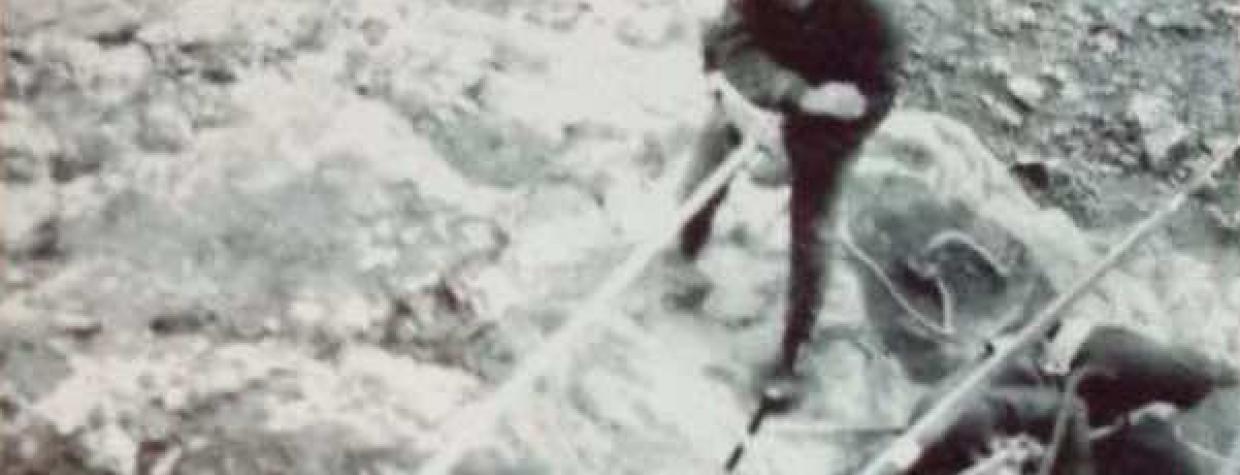Our March issue, on newsstands now, features Annette McGivney's story on the Trans-Canyon Pipeline, a remarkable feat of engineering that carries water from a spring on the Grand Canyon's North Rim to visitor facilities on the South Rim. So we were thrilled last week to get an email from Glen Hook, who now lives in Kalispell, Montana, but worked on the pipeline when it was being constructed in the 1960s.
"I got there right after the Bright Angel part," Hook writes, "but I worked on the south side of the river bolting up valves, and the part from the South Rim where it dropped off to the river, and also the part up to the Indian Garden pump station. The pipe bender was set up at the rim, and I worked from the river up to that point."
Hook says he had to dodge a lot of falling rocks while working from rope tethers, as shown in the photo above. He also recalls the helicopter crash, mentioned in the story, that nearly killed Elling Halvorson, the head of the pipeline project.
"I was up on top when the accident happened," he writes. "The tail rotor struck a piece of cable, and the pilot got his foot caught under a rudder pedal. The labor foreman in the middle had head injuries, and Halvorson had broken ribs driven into his lungs. I visited him in the hospital later and he was doing good thanks to a doctor who flew down to help, but it was a very close call."
Other highlights of Hook's time in the Canyon: "jet jockeys" flying into the gorge and scaring the workers; noticing, on a helicopter flight into the Canyon, a man who had died on the trail; and "the night I spent hanging on the wall because they forgot me until it was too dark to fly."
"All in all, it was a good-paying job, great scenery, but pretty scary some of the time," he says.
Thanks so much for sharing your story, Glen.

